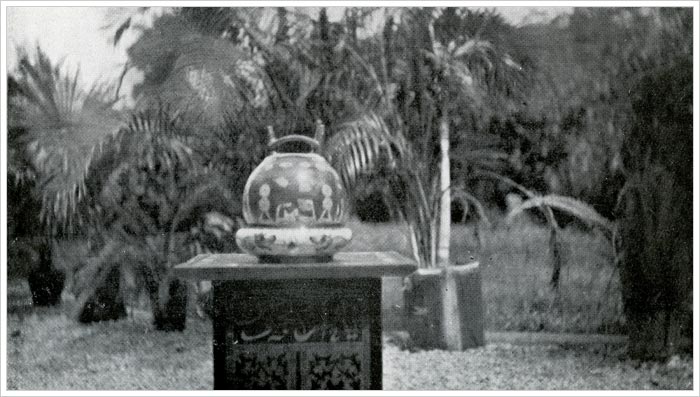Through the Nasca and Cañete Valleys, Part 6
The old Inca viaduct I examined on four different occasions, accompanied by Father Francisco, Don José the Corregidor, and a following of twenty to thirty Indians. I tried hard to persuade some of the latter to go into the tunnel and tell me what it looked like, but, although I offered them every inducement, they refused. They said there were too many devils there. Father Francisco was no more willing than they. “Couldn’t leave his flock,” and all that sort of thing. The only way out of the difficulty was for me to get Indians from another part. So I went in alone, and proceeded to explore by the light of a horn lantern, lent me by the priest. I found the tunnel was decidedly damp in places, and, after nosing around, I discovered a tiny stream of water trickling through at the base on the east side. The tunnel was seven feet high and ten feet wide, and had been excavated out of the solid red sandstone rock. When one comes to consider that it continues for a distance of 2000 metres, right through the heart of a 1000-metre hill, one begins to speculate what manner of men were they who, under Maita Capac’s direction, were able to execute so marvellous an engineering feat with primitive tools. As a result of my examination I came to the conclusion that it was quite possible to open up the old viaduct and set it in going order.
Father Francisco and Don José spent the best part of every day with me. I was never tired of listening to the priest’s interesting yarns of Peru in the days of the Incas. He was a very learned man, of Spanish origin, and had steeped himself in the history of their time. He had read all the old books he could come across that referred to this mysterious race, and the men who preceded them. He said the great Nasca valley originally covered the whole of that part of the country, now looked upon as desert, extending from the port of Chala right away to Cerro Azul; and from Pisco to Ica—including the Huacachina lakes—and past the valley in which we were located, right up to the steppes of the Andes.
In his opinion, it would be well worth the while of any company to obtain permission of the Government of Peru and excavate round the ruins of the old Yungas city. He felt sure they would make some notable finds that might throw considerable light upon the ancient history of Peru.
Within recent years the good Father’s idea has been put to the test, and fully justified. Some most interesting relics were found, including specimens of the potter’s art that were fortunately removed from the debris intact. This was where I obtained my Yungas bowl or water-bottle. When it came into my possession particles of earth still adhered to it. I received it as part of my commission for bringing the matter to the notice of a French company. They had to deposit a large sum with the Peruvian Government before they were allowed to commence operations.
I might have had an easier job with the tunnel had the Indians been less superstitious and nervous. Besides enormous anacondas and coulebras (boa constrictors) and wild beasts of various species, they believed they would meet with sundry evil spirits. I could understand their jibbing at pumas, for though the Peruvian lion is a coward in the open, he fights like a fiend incarnate in the dark. Once upon a time a certain Argentine doctor, who was big-game shooting in Patagonia, followed a puma into a cave. He had a nerve-wracking experience, for almost as soon as he got inside, three large pumas advanced to meet him, snarling and swearing for all they were worth. The doctor thought himself lucky to escape by the skin of his teeth. How that came to pass affords engrossing reading in Col. Roosevelt’s fine book Through the Brazilian Wilderness.
As I have said before, Father Francisco’s chief hobby was the ancient history of Peru. He told me Don José was a lineal descendant of a high-class Indian family who farmed under the Incas. Francisco’s account of the great quicksilver mines of Huancavelica was most interesting. From their discovery some time previous to 1556, up to the date of our conversations, 160,000 tons, and more, of cinnabar ore had been won from the bowels of the earth. In 1786, owing to faulty underpinning, one of the principal tunnels collapsed, and entombed 500 Indian workers. Hence the annual return fell from about 670 tons to 15 cwt. It had, anyhow, decreased to that low figure before the great revolution that occurred in the early part of the nineteenth century. The mines are situated close on 15,000 ft. above sea-level, or rather more than 2500 ft. higher than the city of Huancavelica. In the mountains round about are rich deposits of gold and silver. Mercury is found in many parts of Peru and Bolivia, and also in the Argentine, but not in such considerable quantities as at Santa Barbara. Father Francisco also told me about the celebrated silver mines that are to be found in the province of Junin, north of Lima. He said the silver won from these mines between 1784 and 1889 amounted to the enormous sum of forty millions sterling.

